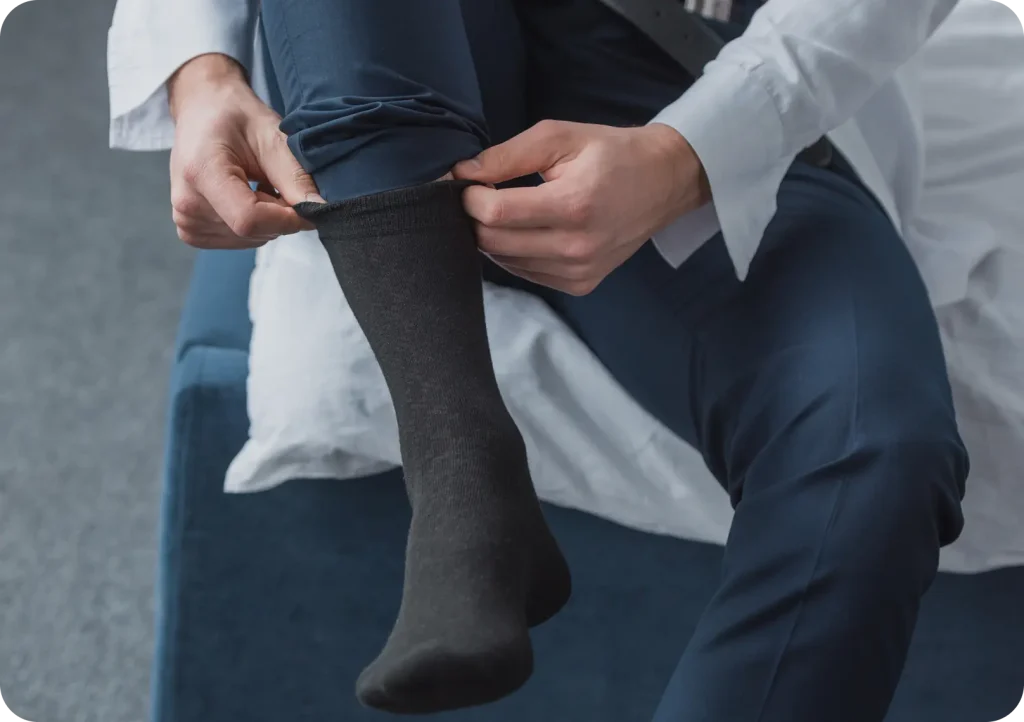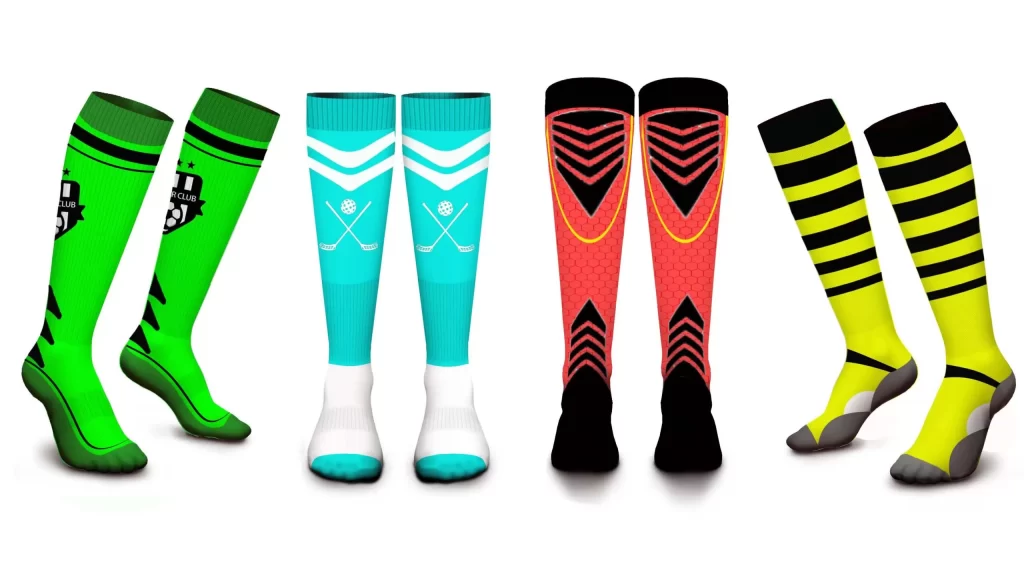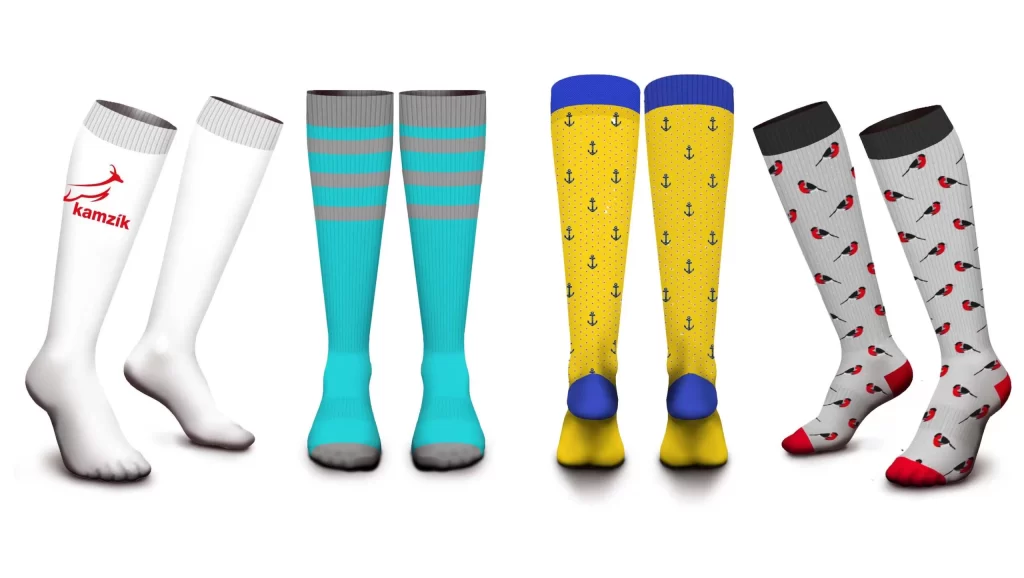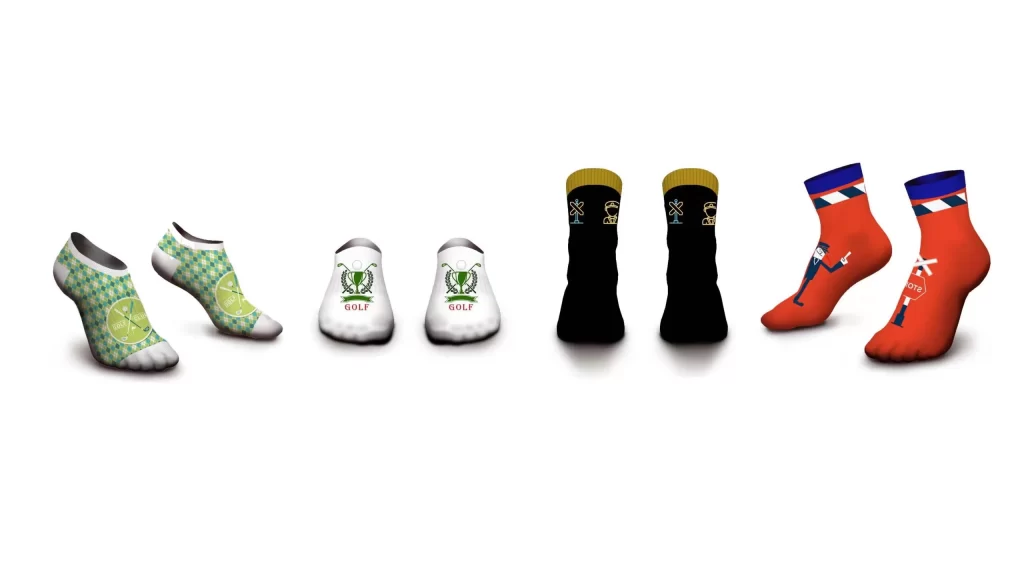The right socks are not just a matter of style – they significantly affect comfort, performance, and the health of your feet. Whether you’re looking for socks for everyday wear, work, sports, or challenging terrain, it’s worth choosing carefully.
In this article, we’ll guide you on how to choose socks based on material, construction, activity, and footwear type – and what to watch out for when shopping.
Why does choosing the right socks matter?
- Reduce the risk of blisters and pressure points
- Provide thermal comfort
- Manage sweat and odor
- Increase comfort while walking and exercising
- Can extend the lifespan of your shoes
Tip: Poor socks can ruin even the best-quality shoes.
1. What sock material should you choose?
Natural materials
- Cotton – soft and breathable, suitable for everyday wear. Not suitable for sports – absorbs sweat and dries slowly.
- Merino wool – top choice for outdoor, hiking, and winter. Keeps warm even when wet, naturally eliminates odor. Ideal for long trips and daily comfort.
- Bamboo viscose – very soft, antibacterial, suitable even for sensitive skin. Excellent for spring/summer.
Synthetic materials
- Polypropylene / polyester – excellent moisture wicking, quick drying, ideal for sports.
- Polyamide (nylon) – increases durability and lifespan of the sock.
- Elastane (lycra) – ensures elasticity and stability on the foot.
Best combinations: Merino + synthetics (for hiking), cotton + elastane (for daily wear), polypropylene + polyester (for sports).
2. What to look for in sock construction?
- Seamless toe – minimizes risk of blisters
- Reinforced heels and toes – extend lifespan
- Terry zones – shock absorption, great for sports
- Ventilation panels – better breathability
- Ribbing / elastic cuff – keeps the sock in place
3. Sock types by activity and footwear
| Activity / Footwear | Recommended socks | Material & style |
|---|---|---|
| Running, sports | Low, breathable | Synthetics, seamless, thin |
| Hiking, outdoor | High, reinforced | Merino + synthetics, terry zones |
| Work, everyday wear | Thicker, comfortable | Cotton + polyamide, antibacterial finish |
| Formal shoes | Thin, elegant | Cotton or bamboo, smooth knit |
| Barefoot shoes | Thin, elastic | Lightweight blend, no padding |
4. Common mistakes when choosing socks
- Wrong size – causes slipping and blisters
- One pair for everything – universal solutions rarely work
- Wrong material for the activity – cotton not for sports, synthetics not for winter
- Thick socks in tight shoes – lead to discomfort and blisters
5. Practical tips by situation
Office
- Smooth cotton socks with elastane
- Low to mid cuff
- Neutral colors (grey, black, blue)
Family trip
- Sports socks with ventilation
- Quick-dry materials
- Reinforced footbed
Mountains
- Thicker socks with Merino
- Higher cut above the ankle
- Excellent thermal comfort and moisture management
Winter
- Wool or thermal socks
- Reinforced heels and toes
- Can be layered with thinner socks underneath
6. Conclusion: How to pick the right socks?
- Consider the activity, weather, and footwear
- Choose quality materials and smart construction
- Have multiple types of socks – just like shoes
- Don’t skimp – good socks save you money and trouble
Want recommendations for specific socks?
In the next article, we’ll look at the best socks for sports, hiking, and everyday wear. Follow our blog or download our free sock selection checklist (PDF).





